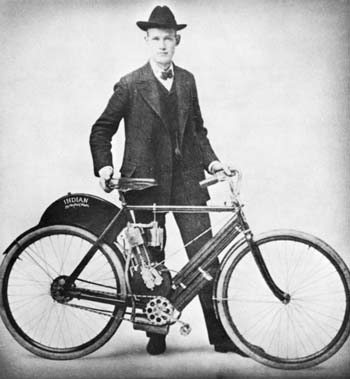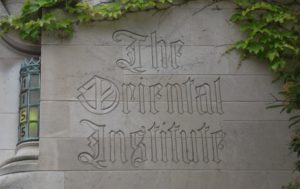In 1919, James Henry Breasted, archaeologist and founder of the Oriental Institute at the University of Chicago, embarked on a year-long trip through the Middle East. His goal was to identify research opportunities throughout the area, and to obtain artifacts to bring back to Chicago. The story (from a 2010 exhibition at the Institute) was told in Archaeology Magazine.
Category: Museums
The Jazz Age in Britain: New Exhibit at Two Temple Place, London
Rhythm and Reaction: The Age of Jazz in Britain has opened at William Waldorf Astor’s former Mansion, Two Temple Place, in London.
From the press release:
Jazz provoked reactions ranging from devotion to abhorrence when the idea, and then the sound, of the music first entered the consciousness of the British public in the aftermath of the First World War. Visiting American groups such as the Original Dixieland Jazz Band and the Southern Syncopated Orchestra offered Britons their first chance to experience the music live.
The growing interest in jazz brought black and white musicians, artists and audiences together, and was crucial in influencing changes in British society, moving from stereotypes descended from the minstrel show to a more nuanced understanding of and interest in African American and black British culture.
The exhibition brings together painting, prints, cartoons, textiles and ceramics, moving film, instruments and the all-important jazz sound, to explicitly examine the influence of jazz on British art, design and wider society.
More details and photos at 1843 Magazine.
Paleo-Indian Science Cafe in Albany, New York
From the NYSM:
Coming in to the Country: The First New Yorkers and the Ice Age Landscapes of New York
Tuesday, January 23, 2018, 6:00-7:00 PM
@ The Hollow Bar + Kitchen
History Program at the New York State Museum
Upcoming Great Places and Spaces history event in Albany this Saturday. From the press release:
Representatives from state historic sites and cultural institutions will provide educational hands-on activities, unique artifacts to explore, and information about upcoming events during the annual “New York State’s Great Places and Spaces” program on Saturday, January 14 from noon to 4:00 p.m. at the New York State Museum.
Visitors can learn about New York State history through activities and information provided by over 20 state historic sites, museums, and libraries. In addition, The Iron Jacks, a singing group that specializes in songs about U.S. sailors of the Civil War era, will perform at noon and 2:00 p.m. There will also be a guided tour of the Hudson Valley Ruins exhibition at 1:00 p.m. and 3:00 p.m. and a “hands-on” cart of Native Peoples reproduction objects where visitors can get first-hand experience with materials used by the Iroquois in the past and present.
Participating institutions include the Adirondack Museum, Albany Institute of History & Art, Albany Pine Bush, Burden Iron Works, Civil War Round Table, Crailo State Historic Site, Franklin D. Roosevelt Presidential Library & Museum, Historic Cherry Hill, Guilderland Historical Society, Johnson Hall State Historic Site, Knox’s Headquarters State Historic Sites, New Windsor Cantonment, NYS Office of Parks, Recreation & Historic Preservation, Olana State Historic Site, Saratoga National Historical Park, Saratoga Racing & Hall of Fame, Schenectady Historical Society, Schoharie Crossing State Historic Site, U.S. Grant Cottage Historic Site, and U.S. Naval Landing Party.
Admission is free. Further information about programs and events can be obtained by calling (518) 474-5877 or visiting the Museum website at www.nysm.nysed.gov.
Indian Motorcycles at the American Swedish Museum
Why does the American Swedish Historical Museum have an exhibit on Indian motorcycles? Because one of the founders of the Indian Motorcycle Company, Carl Oscar Hedstrom, was an immigrant from Sweden. The museum, located in Philadelphia, has several motorcycles and other artifacts on display. While there, you can also pick up some herring and lingonberry preserves at the gift shop.


Best. Publicity Stunt. Ever. (Holy Grail category)
Visitors swamped the museum at the San Isidro Basilica in Spain after two authors published a book claiming a goblet at the basilica is the Holy Grail. It’s not clear yet if the basilica was informed of the stunt prior to publication of the book, or if they were able to raise (or start charging) admission rates before the crowds arrived. Probably not, since they were unable to cope with the demand to see the goblet and have temporarily taken it off display.
Take your pick of news reports covering the story, like this one at the Guardian.
If you need to see The Holy Grail and can’t make it to San Isidro, you can visit the Cloisters Museum in New York City and view another The Holy Grail, a.k.a. the Antioch Chalice, which is either the real Grail, or maybe a lamp. The provenience of that one seems a bit sketchy, too.

William Ritchie Displays the Tools of Archaeology

Archaeologist William Ritchie (left) in 1949 at what is now the Rochester Museum and Science Center.
Photo source: Monroe County Library System image number m0000426

